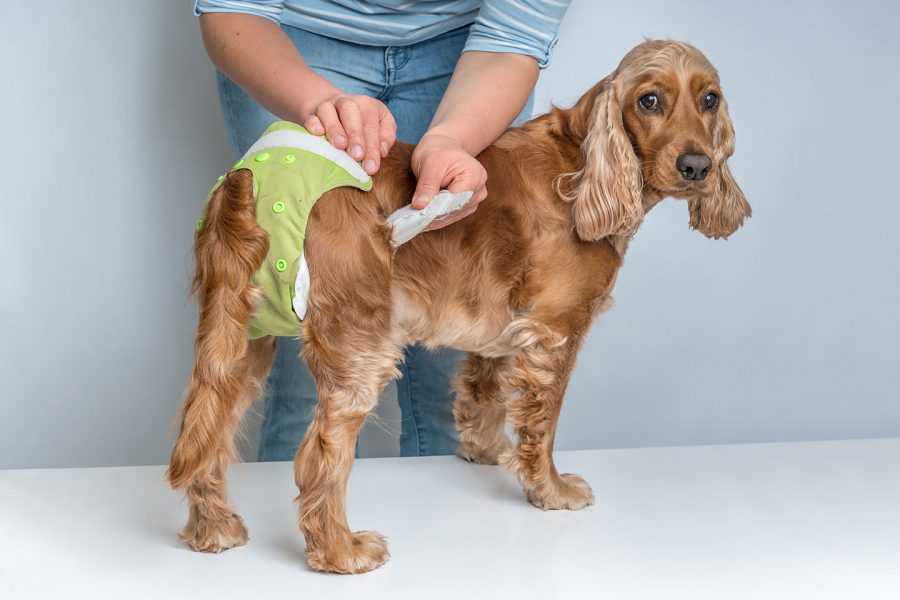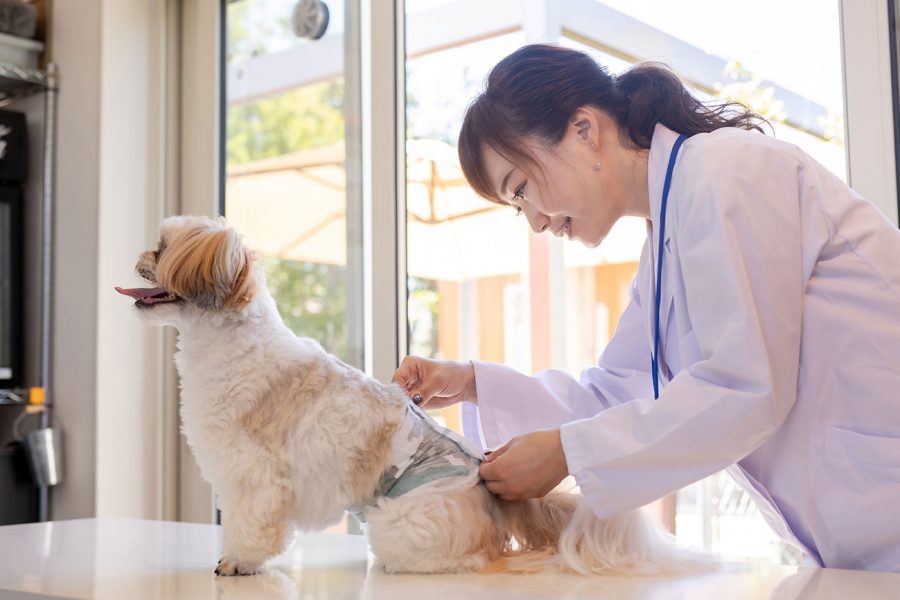Female domestic dogs, unlike most other canids, breed regardless of the time of the year. The cycle of the female dog usually occurs twice a year. The only exception are the dogs closest to ancient and primitive dog breeds, and therefore similar to wolves, such as the Czechoslovakian wolfdog and the Basenji, which tend to enter the reproductive season only once per year, at the beginning of autumn.

When does the first heat appear in female dogs?
The first heat appears when the female dog has reached puberty, on average between 7 and 10 months. As a general rule, however, smaller breeds reach puberty earlier. For example, in a female Poodle, puberty begins as early as 6 months, while in a female Saint Bernard this more commonly occurs around 15 months.
The phases of a female dog’s oestrus cycle
The phases of the female dog cycle are 4: proestrus, oestrus, dioestrus and anoestrus.
The proestrus and the oestrus each have an average duration of 9 days. However, the first proestrus and the first oestrus in a dog’s life, are often shorter than later in life, because the hormones are not yet fully developed.
The proestrus is the phase when the female dog have that blood discharge that owners know well and, if their four-legged friend has not been neutered, they must learn to deal with. Very frequently the veterinarian is asked the question: how often do female dogs have periods?
When a dog’s reproductive cycles are regular, the discharge occurs more or less every 7 months, and this interval increases with age. However, these are not true “periods”, such as a woman’s period, because they appear before ovulation has occurred, and not after, as it happens in women.
Male dogs are very attracted to female dogs in proestrus, which in turn is very playful: she runs with the male inviting him to play and whimpering softly, sniffs, and licks him, and often she pees in a crouched position. The male dog sniffs the female dog a lot, over the whole body and, above all, the genitals. The vulva of the female dog is enlarged and turgid at this stage.
Although she is undoubtedly attracted to males, if a dog tries to mount her a female dog in proestrus will react barking and growling, because she is not yet ready.
The female dog’s receptivity occurs only in oestrus, commonly known as heat. The term “heat” is often used improperly to indicate the entire cycle of the female dog. Actually, it indicates only one phase.
During oestrus, the female dog is much calmer, allowing the male to smell her and, towards the end, even to mount her. The blood losses stop, in this phase. If you do not plan to have your female dog mating with other dogs, it is essential not to expose her to male dogs at this stage, for example avoiding crowded dog areas and, in general, always walk her on a leash and in the hours of the day when she is less likely to meet other dogs.
The dioestrus lasts an average of 75 days. When she enters this phase of the cycle, the female dog stops being receptive to mating, and the male ceases to be attracted to her. This situation remains unchanged even in the long anoestrus phase, which has an average duration of 4 months.

When do dogs go through menopause?
Female dogs have a normal cycle of up to 5-7 years. However, the female dog’s cycle does not completely end. Female dogs go into heat all their lives; therefore, the risk of an unwanted pregnancy is always lurking.
It is important to know that …
The mutual attraction between a male and a female dog, which is already clear when the female is in proestrus, leads dogs to seek each other. This increases the likelihood of them escaping from the owner’s custody, escaping from the leash or jumping over a garden’s fence.
What can you do in these circumstances? Surely you need to increase your vigilance and use a GPS locator such as Kippy Evo. In the event that your dog is still able to evade your custody, Kippy Evo will allow you to intervene promptly, tracking your pet and, therefore, recovering it in super quick time!
Federica Pirrone, Mariangela Albertini, Patrizia Piotti researchers at UNIMI Veterinaria
